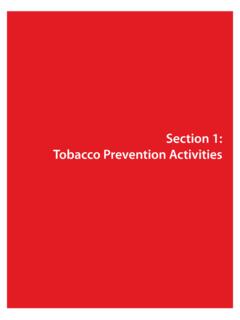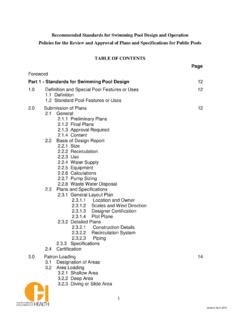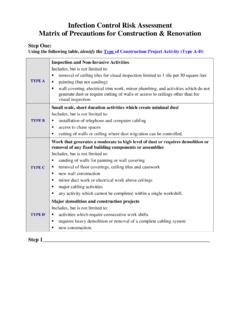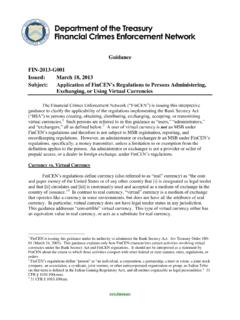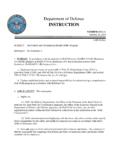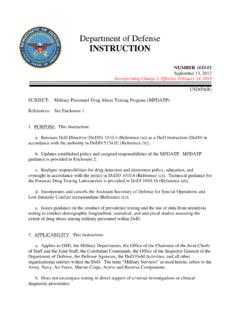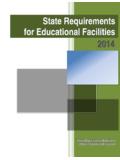Transcription of EMT-Basic Pre-Hospital Treatment Guidelines
1 EMT-Basic Pre-Hospital Treatment Guidelines 3rd Edition South Dakota Department of Public Safety Emergency Medical Services 118 West Capitol Avenue Pierre, South Dakota 57501-2536. Introduction The Pre-Hospital Treatment Guidelines were developed to establish standards of care which are consistent throughout the State of South Dakota, and to provide the EMS provider with a quick field reference. Users of these Guidelines are assumed to have knowledge of the more detailed and basic patient care principles found in EMS textbooks and literature appropriate to the EMS provider's level of certification. These Guidelines are intended to reflect the current Treatment Guidelines for the EMT. These Guidelines are not intended to be absolute Treatment doctrines, but rather Guidelines which have sufficient flexibility to meet the complex cases presented to the Emergency Medical Technician in the field.
2 The South Dakota Pre-Hospital Treatment Guidelines for the Emergency Medical Technician, Third Edition, was developed and updated by the South Dakota Office of Emergency Medical Services and members of the State Emergency Medical Services Advisory Committee. These South Dakota Pre-Hospital Treatment Guidelines were developed using current National Highway Traffic Safety Administration Guidelines , with reference and assistance provided by the State of Minnesota BLS Guidelines and Commonwealth of Kentucky State Protocols and Pre-Hospital Trauma Life Support Guidelines . South Dakota General Patient Care Guidelines Table of Contents August 2010. Adult Medical Emergencies ..1000. Abdominal Emergencies .. 1005. Allergic Reactions .. 1010 . Altered Mental Status.
3 1015. Cardiac Arrest .. 1020. Chest Pains .. 1025. Congestive Heart Failure/Pulmonary Edema .. 1030. Diabetic Emergencies .. 1035. Environmental: Heat Emergencies .. 1040. Environmental: Cold Emergencies .. 1045. Frostbite and Frozen Emergencies .. 1050. Obstetrical and Gynecological Emergencies-Normal Delivery .. 1055. Obstetrical and Gynecological Emergencies-Breech and Prolapsed Cord .. 1060. Poisonings and Overdose .. 1065. Respiratory Distress .. 1070. Seizures .. 1075. Strokes and Transient Ischemic Attacks .. 1080. Adult Trauma Emergencies ..2000. Abdominal Trauma .. 2005. Amputations, Bleeding and Shock .. 2010. Burns Chemical and Electrical .. 2015. Chest Trauma .. 2020. Drowning and Near-Drowning .. 2025. Extremity Injuries Fractures, Dislocations, Sprains.
4 2030. Head Trauma .. 2035. Sexual 2040. Spinal Injuries .. 2045. Triage START .. 2050. Triage START/JumpSTART .. 2055. Pediatric Emergencies ..3000. General Assessment .. 3005. Allergic Reaction .. 3010. Altered Mental Status .. 3015. Breathing Difficulty .. 3020. Burns .. 3025. Cardiac Emergencies .. 3030. Child Abuse and Neglect .. 3035. Diabetic Emergencies .. 3040. Drowning and Near Drowning .. 3045. Environmental Emergencies: Cold Emergencies .. 3050. Environmental Emergencies: Heat 3055. Frostbite and Frozen Emergencies .. 3060. Newborn Resuscitation .. 3065. Poisonings and Overdoses .. 3070. Seizures .. 3075. Special Needs Children .. 3080. Sudden Infant Death Syndrome (SIDS) .. 3085. Triage JumpSTART .. 3090. Medications ..4000. Activated Charcoal.
5 4005. Dextrose Oral Glucose .. 4010. Epinephrine .. 4015. 4020. Oxygen .. 4025. Reference Guides ..5000. Combitube/King Airway(Supraglottic) .. 5005. Epinephrine Auto Injector .. 5015. Glasgow Coma Scale & Revised Trauma Score .. 5020. Metered Dose Inhaler .. 5025. PASG/MAST Pants .. 5030. Pulse Oximetry .. 5035. Vital Signs .. 5040. Special Circumstances and Laws ..6000. Baby Moses Law .. 6005. Bloodborne Pathogens .. 6010. Comfort One/DNR .. 6015. Crime Scenes/Evidence Preservation .. 6020. Critical Incident Stress Management .. 6025. Dead on Arrival DOA .. 6030. Emergency Traffic Laws .. 6035. South Dakota General Patient Care Guidelines August 2010. All levels of providers should complete an initial, rapid and/or focused assessment on every patient and should use approved necessary skills and treatments in order to maintain a patient's health and well- being.
6 Initial Assessment Scene Size-Up Assess scene safety, look for mechanism of injury/nature of illness, number and locations of patients Assess need for proper body substance isolation (BSI). Request additional resources and assistance as needed General impression of the patient Consider cervical spinal precautions Check level of consciousness using AVPU scale Determines life threats or chief complaint Airway Assess patient for patent airway Open airway using head-tilt, chin-lift or jaw thrust according to nature of incident or call Suction as needed Place oropharyngeal or nasopharyngeal airways as needed Breathing Assess patient breathing noting rate, rhythm, and quality of respirations Assess lung sounds Apply oxygen as necessary according to patient presentation and/or chief complaint Nasal Cannula 1-6 LPM.
7 Non-Rebreather 10-15 LPM. Bag-Valve Mask 12-15 LPM. Circulation Assess patient's pulse noting rate, rhythm and quality Look for and control any major/life-threatening bleeds Assess patient's skin color, temperature, condition History and Vital Signs Obtain pulse, respirations, blood pressure Blood glucose as necessary Gather history using SAMPLE and OPQRST. S: Signs/Symptoms A: Allergies M: Medications (Over-the-counter, prescribed, vitamins, etc). L: Last Oral Intake E: Events Leading Up To Event/Injury O: Onset P: Provokes/Provocation Q: Quality R: Radiates/Radiation S: Severity T: Time Rapid Trauma/Detailed/Focused Assessment This assessment should be done systematically, placing emphasis on the chief complaint, nature of illness or mechanism of injury presented.
8 Any life-threatening injuries should be treated as found, if not done so in the initial assessment. The standard DCAP-BTLS should be used in the physical exam. DCAP-BTLS. D: Deformities C: Contusions A: Abrasions P: Punctures/Penetrations B: Burns T: Tenderness L: Lacerations S: Swelling Head and Eyes Assess for DCAP-BTLS. Check for Raccoon Eyes Check pupils for responsiveness, size and equality Check ears for Battle's Signs and cerebrospinal fluid or blood Neck Assess for DCAP-BTLS. Check for tracheal deviation Check for jugular vein distention (JVD). Chest Assess for DCAP-BTLS. Check for paradoxical motion Check for open chest wounds Auscultate lung sounds Abdomen Assess for DCAP-BTLS. Asses all four quadrants for rigidity and distention Pelvis Assess for DCAP-BTLS.
9 Assess for stability Assess genitalia, as needed Upper/Lower Extremities Assess for DCAP-BTLS. Check Circulatory, Motor, Sensation (CMS). Check range of motion, as necessary Back Assess for DCAP-BTLS. Ongoing Assessment A patient's airway, breathing, circulation, interventions/treatments and vitals should be checked regularly. Stable patients should have vitals taken every 15 minutes Unstable patients should have vitals taken every 5 minutes Adult Medical Emergencies -Abdominal Emergencies -Allergic Reactions -Altered Mental Status -Cardiac Arrest -Chest Pains -Congestive Heart Failure/Pulmonary Edema -Diabetic Emergencies -Environmental Emergencies -Obstetrical -Poisonings/Overdose -Respiratory Distress -Seizures -Strokes South Dakota Medical Guideline Abdominal Pain, Non-Trauma Guide 1005.
10 August 2010. This guideline is to only be used in situations where the patient has no indication or history of trauma. In addition to standard assessment, specific questions should be asked during the patient history. Abdominal Physical Assessment and History Ask patient to point to area of pain and palpate that region last Gently palpate all four quadrants for tenderness, rebound tenderness, and pulsating masses. Ask patient for history of nausea/vomiting Color, blood tinged, coffee ground Ask patient for history of bowel movement Diarrhea, tarry, bloody Ask patient for history of urine output Painful, color, blood present EMT. Complete patient assessment Give nothing by mouth Consider oxygen, as condition warrants Transport patient in position of comfort Consider ALS Intercept if condition warrants or available South Dakota Medical Guidelines Allergic Reaction Guide 1010 .
